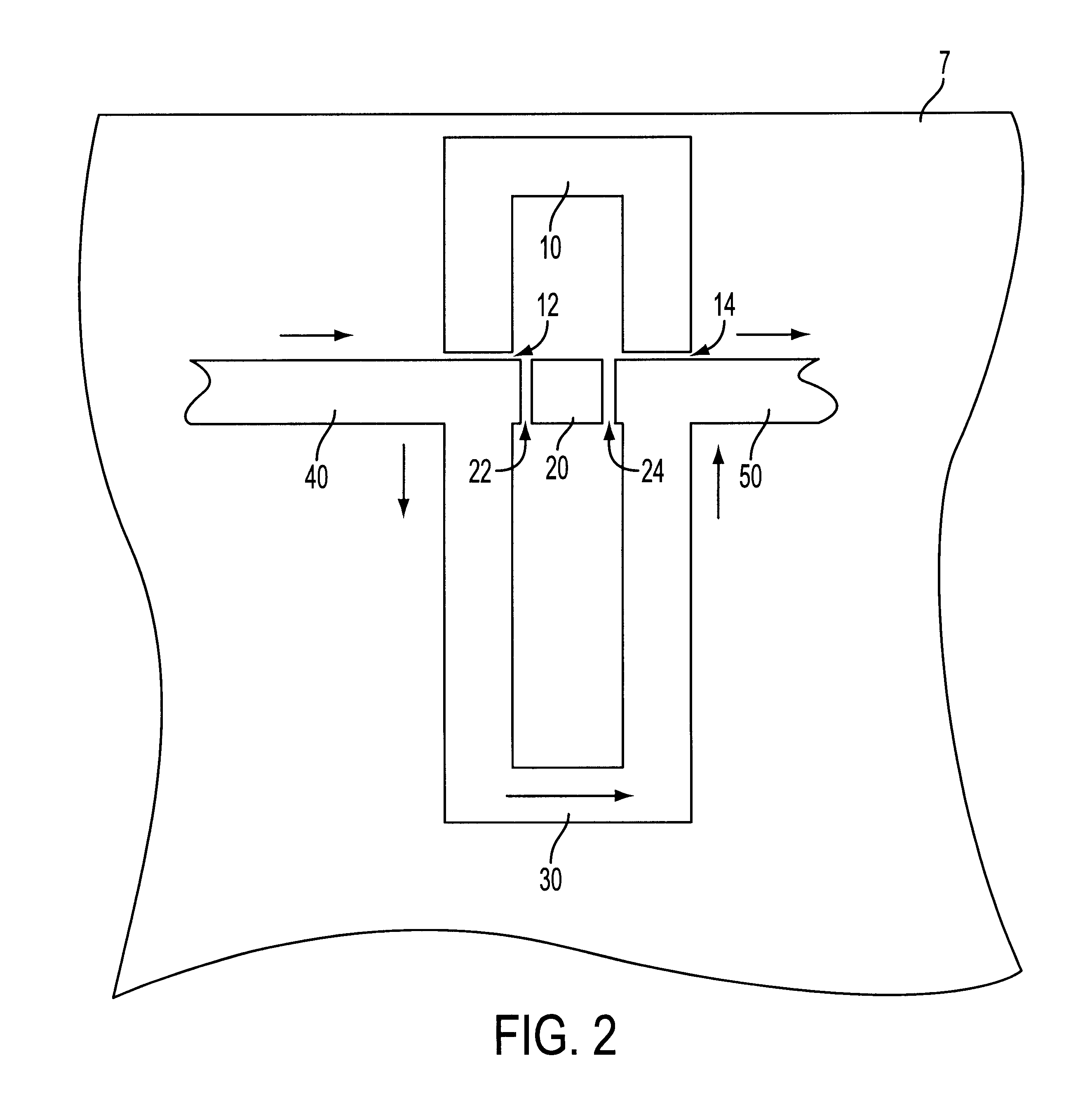Method and apparatus for reducing signal timing skew on a printed circuit board
a technology of printed circuit boards and signal timing skew, which is applied in the direction of generating/distributing signals, removing conductive materials by irradiation, instruments, etc., and can solve the problems of imposing additional manufacturing limitations, high cost, and relatively high implementation cos
- Summary
- Abstract
- Description
- Claims
- Application Information
AI Technical Summary
Problems solved by technology
Method used
Image
Examples
Embodiment Construction
FIG. 7 illustrates three memory modules, each containing a plurality of memory chips on a printed circuit board, which were serially interconnected to demonstrate use of the invention. The three memory modules 50, 60, 70 have a series connected clock signal. Each untuned memory module 50, 60, 70 has an inherent clock signal-to-reference signal skew of 100 ps. Thus, the three untuned memory modules have a cumulative clock signal-to-reference signal skew of 300 ps. This number increases as the number of memory modules having serially connected clock signals increases. Each memory module also is provided with a respective signal path adjustment section 55, 65, 75 corresponding to one of the embodiments shown in FIGS. 1, 2, 4, 5, or 6 at the output side thereof. The clock signals connect from the output of one memory module, i.e., module 50, to the input of another memory module, i.e., module 60.
To adjust the clock timing skew, the adjustment section 55, 65, 75 of each memory module 50,...
PUM
 Login to View More
Login to View More Abstract
Description
Claims
Application Information
 Login to View More
Login to View More - R&D
- Intellectual Property
- Life Sciences
- Materials
- Tech Scout
- Unparalleled Data Quality
- Higher Quality Content
- 60% Fewer Hallucinations
Browse by: Latest US Patents, China's latest patents, Technical Efficacy Thesaurus, Application Domain, Technology Topic, Popular Technical Reports.
© 2025 PatSnap. All rights reserved.Legal|Privacy policy|Modern Slavery Act Transparency Statement|Sitemap|About US| Contact US: help@patsnap.com



